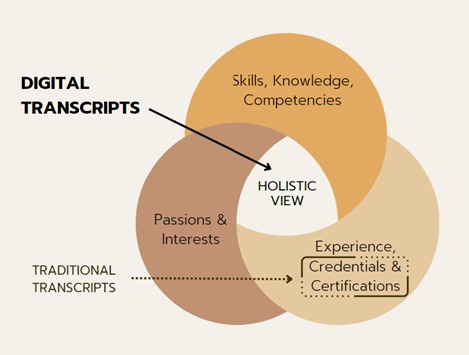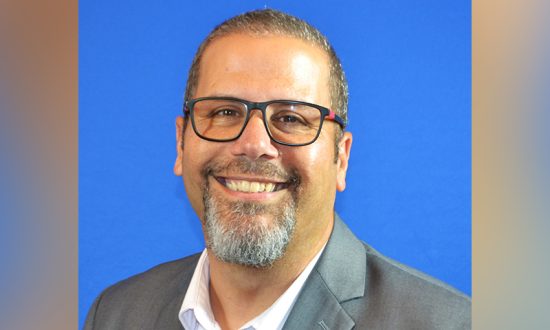Dr. ‘Bob’ serves as an Instructional Systems Specialist for the Department of Homeland Security where he develops training policy for the US Coast Guard, as well as a professor for the School of Business & Leadership at Regent University. Prior to coming to Regent and the USCG, he served as a teacher for Virginia Beach Public Schools and was an instructional designer for mid and senior-level leadership courses for the DoD and DHS. Most recently, he has helped spearhead an international initiative driven by Edify Online to partner with MIT-World Peace University where he designs, develops, and facilitates Design Entrepreneurship and Strategic Business courses for students in Pune, India. As a military veteran, he has spent many years developing strategic partnerships with educational institutions and veteran service organizations nationwide to promote the professional, academic, and personal success of veterans and their families. Dr. Bob also serves as a consultant for innovation initiatives and change management for many national organizations and has spearheaded numerous initiatives from inception to implementation. Some of these initiatives have led to millions of dollars in net revenue gain and have gained national recognition within the higher education industry.
Imagine a world where students at all levels would be connected to every learning, employment, and volunteer opportunity based on competencies, skills, knowledge, interests, passions, and yes – course and credential completion. A system that documents a person’s interests, passions, and hobbies, and then shows a correlation (a Venn diagram if you will) where those unique attributes intersect with skills, competencies, knowledge, along with credentials and certifications earned. Take this a step further and show the intersection between all those facets and the needs and desires of employers or those of higher education institutions seeking the best-fit students. In essence, a match-making effort of epic proportions.

Have your attention yet?
There are two primary types of change: evolutionary and revolutionary. Higher education has typically embraced evolutionary change due to the relatively slow pace of related efforts. While there are some institutions around the globe that fully invest into revolutionary change, many (if not most) wait to see which way the tide is rolling and try to pivot accordingly. This brings us to transcripts, more specifically digital transcripts. Now I know what you are thinking…”We use parchment services and allow students to access digital transcripts through the National Student Clearinghouse.” Good start to this needed change, but those efforts don’t go far enough given the rapidly changing education and employment landscapes. Couple that with the fluidity of the needs and desires of the latest generation of students, higher education as an industry must lead the way to revolutionize how we holistically capture who a student is – who a person is.
Let’s be honest, the practice of matching recent college graduates to prospective employers is akin to throwing darts at a dart board. While not a random attempt in all cases, the vast number of variables inherent in that process is scary at best. What can an employer really tell about a person’s interests, passions, and actual competencies from a college transcript or even the most detailed resume? Resumes are based on self-reported information, and transcripts at large simply show what courses were completed and how a student performed from a numerical standpoint.
The Mastery Transcript Consortium has started to run with this idea and put it into practice. They boast that there are no grades on their transcripts which are available to participating schools and employers. They state “MTC members don’t reduce learners to single numbers, but they do hold them to high standards. When learners master critical skills and content, they earn competencies which combine to create a clear, succinct visualization of each learner’s strengths.” In essence, deploying micro-credentials and a badging system based on skills and competencies are demonstrating higher levels of efficacy and trust within the education and employment landscapes.
In any match making scenario, one of the goals is to find connection points between what a person is good at and what a person loves to do. Traditional transcripts fall way short of this goal, but yet we rely on this tool to serve as the primary vehicle by which we match students to educational institutions. Beyond that, the traditional resume only tells a potential employer ‘how’ a candidate could provide results, but certainly not speaking into the ‘why’ they would. If your mind is jumping to the interview stage, let’s be honest, many hiring managers are still using scripted questions designed to flesh out more details about the ‘how’ and rarely focus on the ‘why.’ Let’s change that.
Enter digital transcripts. Not just an electronic depiction of the hard copy documentation of courses and grades, but a reasonable approach to capturing a person in a holistic manner. Does it show coursework completed? – yes. Grade earned? – up for debate. Competencies? – yes. Interests? – yes. Skills/Knowledge? – yes, of course! With all of that information, schools and employers can make better-informed decisions about the people they want to build relationships with. It must be more than simply documenting course completion with assigned grades. That only tells a part of the story.
I understand that this idea will present challenges, which will not be solved in this short article, but we must try. After all, failure is a huge part of success. Things that we will need to tackle as a community:
- How do we validate self-reported information?
- Who would have ‘permission’ to make entries?
- Who would manage this (assuming it was a portal of some kind)?
- Would access be free or would it be subscription-based?
- What type of oversight and governance would be needed?
- How would we address privacy and security challenges?
You get the drift of all the inherent challenges that would need to be addressed, but just because something is difficult doesn’t mean we shouldn’t do it. Could we start with a ‘Blockchain’ type of infrastructure? According to the folks at EdTech (2022), “Arizona State University and a coalition of open-source technology architects are using emerging technologies to help students document their skills and competencies throughout their academic journeys. The technology they’ve developed is based on a technical stack enterprise infrastructure for distributed ledger technologies.” Dallas Innovates (2021) continues the conversation by calling out GreenLight’s “life transcript” that can expand beyond grades to certifications, job experiences, verified skills, and more. According to Forbes, GreenLight is one of a handful of companies helping students find better opportunities through blockchain records. In 2020, the Texas College Bridge, in partnership with the Texas Education Agency, selected GreenLight to provide its blockchain records program to students to help them become college ready.
At the end of the day, colleges and employers don’t always want the best candidates, they want the ‘right’ ones. As a community of like-minded professionals, we simply must invest in our people in more holistic and altruistic ways. Let’s find out who our people are and find ways to match them with the best fit. This benefits them, the organization, and our community. It’s time for revolutionary change that will connect us together in more holistic ways.




